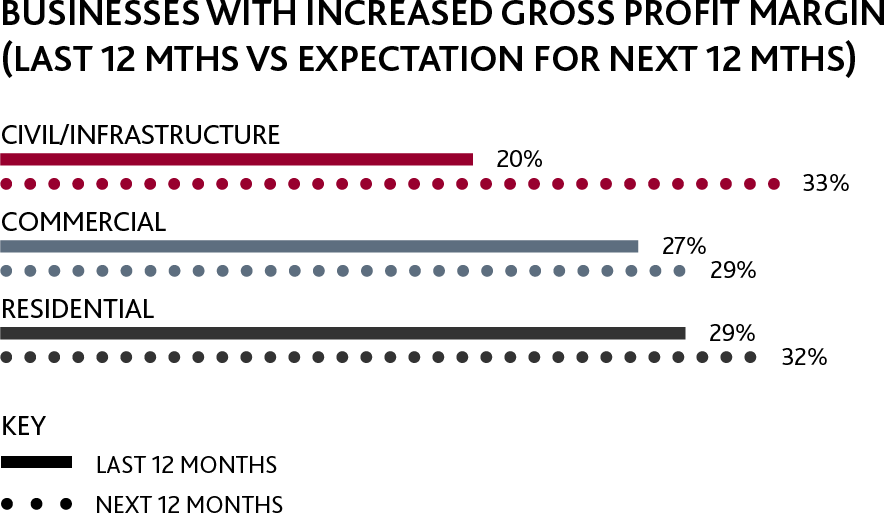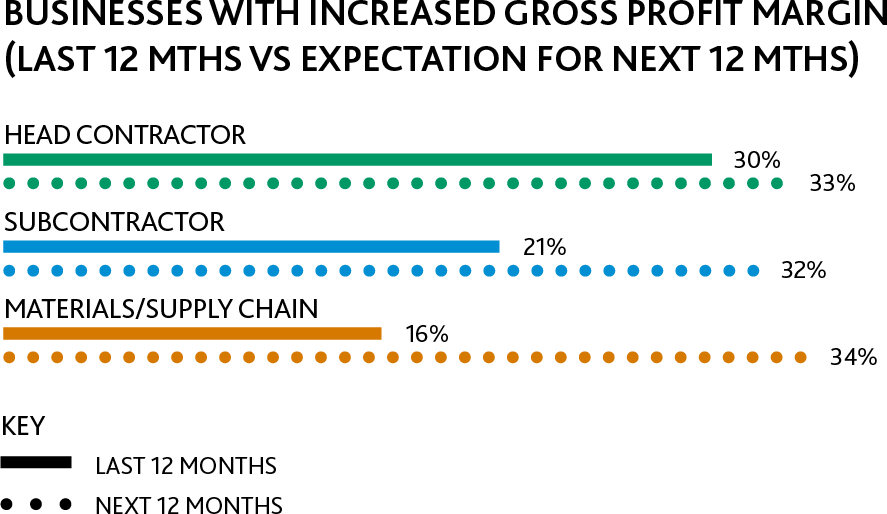Construction subsector trends
Looking more closely at the different groups that make up the construction sector, we can see that some are faring better than others:
Compared to the commmercial and civil sectors, the residential subsector appears to be under particular strain when it comes to forward work security. This is unsurprising given ongoing high mortgage rates are dampening demand - home consents were down by 25% for the year ended March 2024 compared to year ended March 2023, according to Stats NZ.
Many small businesses (fewer than 11 staff) experienced reduced profit margins in the past year.
And while those involved in materials and supply chains have reported the lowest levels of profit margin growth in their sector, they are feeling the most positive about their overall business performance now and into the future.






